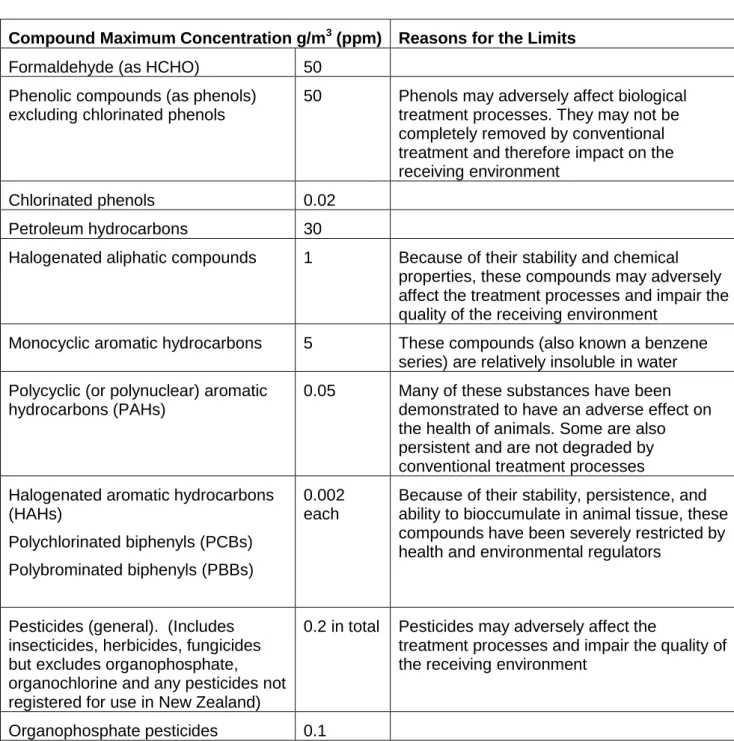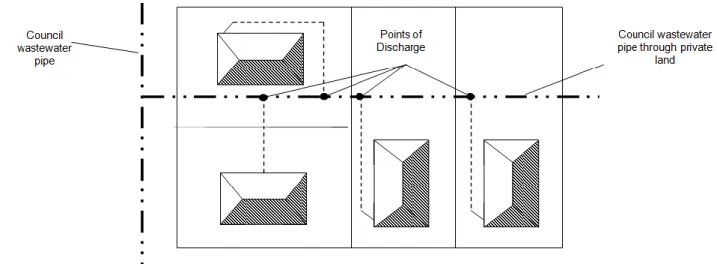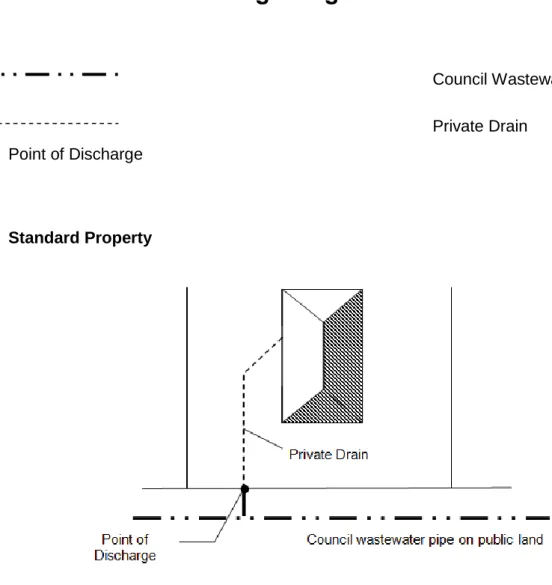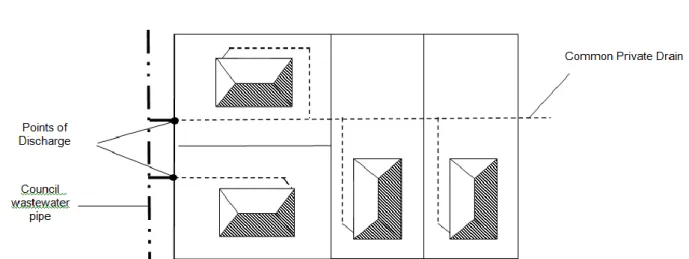In this statute, Part B contains provisions on the acceptance of waste water for the waste water system and the protection of the waste water system. This bylaw applies to all premises in the Tasman District where trade waste or domestic sewage is discharged or is likely to be discharged into the sewage system. Characteristic means any of the physical or chemical properties of commercial waste or domestic sewage.
Conditional Discharge means trade waste accepted for discharge into the waste water system under a trade waste permit. Discharge means the discharge of trade waste or domestic waste water into, or into, the waste water system, either directly or indirectly by means of any private drain and 'the discharge' has a corresponding meaning. Fees and charges means the fees and charges approved by the Council for services relating to the discharge of trade waste into or connection to or disconnection from the waste water system.
Occupant means the person who resides in the commercial premises that is connected to and discharges to the waste water system. - Treatment means any treatment of commercial waste or domestic waste water designed to reduce or vary any characteristics of such waste water prior to discharge to the waste water system in order to comply with an acceptable discharge or a commercial waste permit. one). Registered discharge means commercial waste that is accepted for discharge into the waste water system when it has been registered with the Council.
Industrial waste permit means a written approval authorizing the person named in the permit to discharge industrial waste into the wastewater system.
Abbreviations
Tank waste is water or any other liquid, including waste in solution or suspension, that is transported by vehicle for disposal (excluding domestic waste water that is transported in house buses, caravans, coaches and similar vehicles). Any premises used or intended to be used for industrial or commercial purposes; or (b). Any premises used or intended to be used for the storage, transfer, handling or. waste disposal or for other waste management purposes, or used for composting organic matter; or.
Trade waste means any liquid, with or without substances in suspension or solution, which is or may be discharged from trade premises into the sewage system in the course of a trade or industrial process or operation or in the course of any activity or operation of a similar nature. Wastewater reticulation means collection and transport lines and supplies downstream of the discharge points and which form part of the waste water system. Sewage sludge means the material that is settled and removed from the wastewater during the treatment process.
Sewage system means all pipes, pumping stations, storage tanks, sewage treatment plants, outfalls and other related structures owned by or under the control of the council for the collection, conveyance, treatment and disposal of sewage from the point(s) of discharge.
General
Review of Decisions
Accidents and Non-compliance
Fees and Charges
Continuation/Cessation of Discharge
Failure to Pay
Access and Powers of Entry
Offences and Penalties
Transitional Provisions: Existing trade waste permits
PART B – Acceptance and Control of Discharge 1. Acceptance and Control of Discharge
- Continuity of Discharge
- Prevention of Inflow and Infiltration
- Disinfected/Super Chlorinated Water
- Swimming Pool or Spa Pool Discharge
- Storage, Transport, Handing and use of Hazardous or Harmful Materials
- Wastewater Discharges and Trade Waste Permits
- Connection and Disconnection
- Connections
- Private Pump Stations
- Pressure Wastewater Reticulation
- Disconnections
- Point of Discharge
- Protection of the Wastewater System
- Building over or alongside wastewater reticulation
- Loading or material over wastewater reticulation
- Working around wastewater reticulation
- Blockages
- Trees
- Inspection point
Owners must demonstrate that the pool drain has been fitted with a flow limiting device to ensure that the discharge into the waste water system does not exceed a maximum instantaneous flow of 1 L/s. The Council reserves the right to further limit the degree and timing of any discharge. The Council reserves the right to refuse any application where the establishment of such connection or connections is not practicable or economical.
The agreement or easement is recorded on each owner's title certificate; and c) the combined flow rate of the discharge to the waste water system must not exceed the flow rate. However, the Council's plans and reports should only be taken as a guideline and due care should be taken to ensure that the grid is not damaged. It is the responsibility of the owner/developer to locate the position and depth of any wastewater networks.
The Board may attempt to recover the costs of repair from the person who caused the damage. If it is not biodegradable, it should generally not be flushed through the waste water pipe. If the plumber finds that the blockage is within the reticulation of the municipal wastewater. then the plumber will contact the council, who will arrange for the blockage to be removed and removed and all affected areas cleaned.
The cost of tree removal will be borne by the property owner, unless otherwise agreed in writing with the Council.
PART C – Trade Waste Discharge 1. Trade Waste
- Processing an Application
- Consideration of an Application
- Consideration and Approval Criteria for a Trade Waste Discharge
- Duration of Trade Waste Approvals
- Technical Review and Variation
- Transfer or Termination of Rights and Responsibilities
- Cancellation of a Trade Waste Permit
- Summary Cancellation
- Tankered Wastes
- Grease Traps or Sediment and Oil Traps
- Discharges via Enzyme Based Grease Converters
- Pre-treatment
- Flow Metering
- Estimating Discharge
- Sampling and Monitoring
- Sampling Methodology
- Non-compliance
Admissibility of trade waste to any existing or future pre-treatment (eg screens, grease or sludge traps), cleaner production techniques and waste minimization practices; The proportion of the mass flow rate of the discharge characteristic in the total mass flow rate of that characteristic in the wastewater system; The total mass of properties allowed in the wastewater system and the proportion (if any) that will be reserved for future allocations.
In the event that the permit holder or owner of the building changes, or if there is a change of use, a new permit for industrial waste is applied for and/or the provisions of part C, paragraph 7, apply. For any negligent act or omission which, in the opinion of the Board, threatens the safety of or threatens to damage any part of the waste water system or threatens the health or safety of any person;. If an event occurs which, in the opinion of the Board, constitutes a potentially serious threat to the environment;
If any other circumstances arise which, in the opinion of the Board, make it necessary in the public interest to cancel the right to dismissal. If requested, have material safety data sheets (MSDS) provided to the Council detailing the contents of a waste;. Be tested to determine their character if the contents of the waste are not known.
A first flush system will be installed for ultimate disposal to the Council's waste water system, with subsequent discharge as storm water. The operator is able to provide records of regular (at least weekly) checks of the system to ensure that it is working properly; and.. f) The Board is satisfied that there is no risk to the waste water system from the continued use of the converter. All equipment shall be subject to the approval of the Board, but shall remain the property of the permit holder.
A copy of the independent certification of each calibration verification result shall be submitted to the Council. This will be calculated on the basis of the average of the previous 12 months charged to the licensee and the charges will be adjusted accordingly. Where the average of the previous 12 months would be one. unreasonable estimate of the discharge due to wide variation due to seasonal or other causes, the Council may consider this to arrive at a reasonable estimate and the permittee shall pay according to such estimate.
One portion of the sample will be sent to a commercial waste disposal facility for analysis and/or storage; The second part of the sample is analyzed in a laboratory approved by the Council.
PART D – Domestic Wastewater Discharge 1. Domestic Wastewater Discharge
Schedule A: Acceptable Discharge Characteristics
Reasons (a) When such emulsions cannot be treated. these can be discharged into the waste water system if the total suspended solids do not exceed 1000 g/m3. b) The Council may require pre-treatment of such emulsions where the emulsion effluent is likely to unreasonably impede the operation of the Council's treatment plant, e.g. Eligible for treatment in relation to emulsion wastewater means that the total organic carbon content of the waste is reduced by 90% or more when the wastewater is subjected to a simulated wastewater treatment process that matches the wastewater treatment process. Emulsions vary considerably in their properties and local treatment facilities. additional restrictions may be necessary depending on the experience of the particular treatment plant and the amount of emulsion to be treated. No waste shall have any color or coloring matter that would cause the discharge to be colored to such an extent as to impair the wastewater treatment processes or to jeopardize any consent of the source for the discharge of the treated wastewater.
Paint can cause aesthetic deterioration of the receiving water and adverse effects on lagoon treatment processes and ultraviolet disinfection. The pH should be between 6.0 and 9.0 at all times. Extreme pH can adversely affect biological treatment processes, the safety of operating and maintenance personnel, cause corrosion of wastewater network components, and increase the potential for release of toxic gases such as H2S and HCN. Important Note: All chemical properties can adversely affect the safety of operators and the environment.
High MBAS can negatively affect the efficiency of wastewater treatment plants and thereby compromise the aesthetics of receiving water. Kjeldahl nitrogen 150 High Kjeldahl nitrogen can contribute significantly to the nutrient load of the receiving environment. Total phosphorus (as P) 50 A high level of phosphorus can contribute significantly to the nutrient load of the receiving environment.
Sulfate (measured as SO4) 200 Sulfate can adversely affect wastewater structures and increase the potential for generation of. 1 Sulfites in wastewater can cause corrosion of wastewater structures, especially the non-wetting upper portion of the wastewater system, and generate odors that may cause public nuisance. Dissolved Aluminum 100 Aluminum compounds, especially in the presence of calcium salts, have the potential to precipitate to a degree that can cause blockage in the wastewater system.
Metals have the potential to degrade the treatment process, affect the receiving environment, and limit the reuse of sewage sludge and wastewater. Halogenated aliphatic compounds 1 Due to their stability and chemical properties, these compounds can adversely affect treatment processes and degrade the quality of the receiving environment. Some are also persistent and are not broken down by conventional treatment processes Halogenated aromatic hydrocarbons.
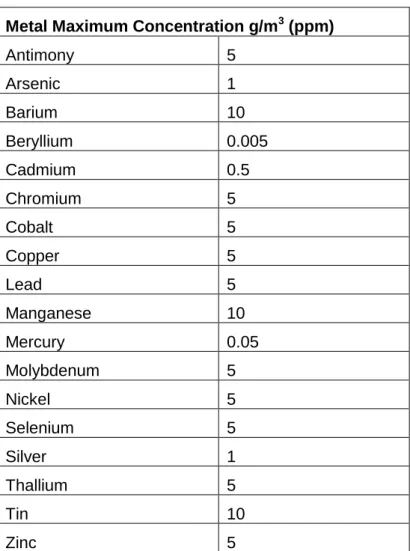
Schedule B: Point of Discharge diagrams
Schedule C: Trade Waste Discharge Activities
Health services, including hospitals and surgical day care centers (e.g. doctor's offices/medical centers), medical laboratories and vaccine manufacturers.
Schedule D: Prohibited Waste Characteristics
